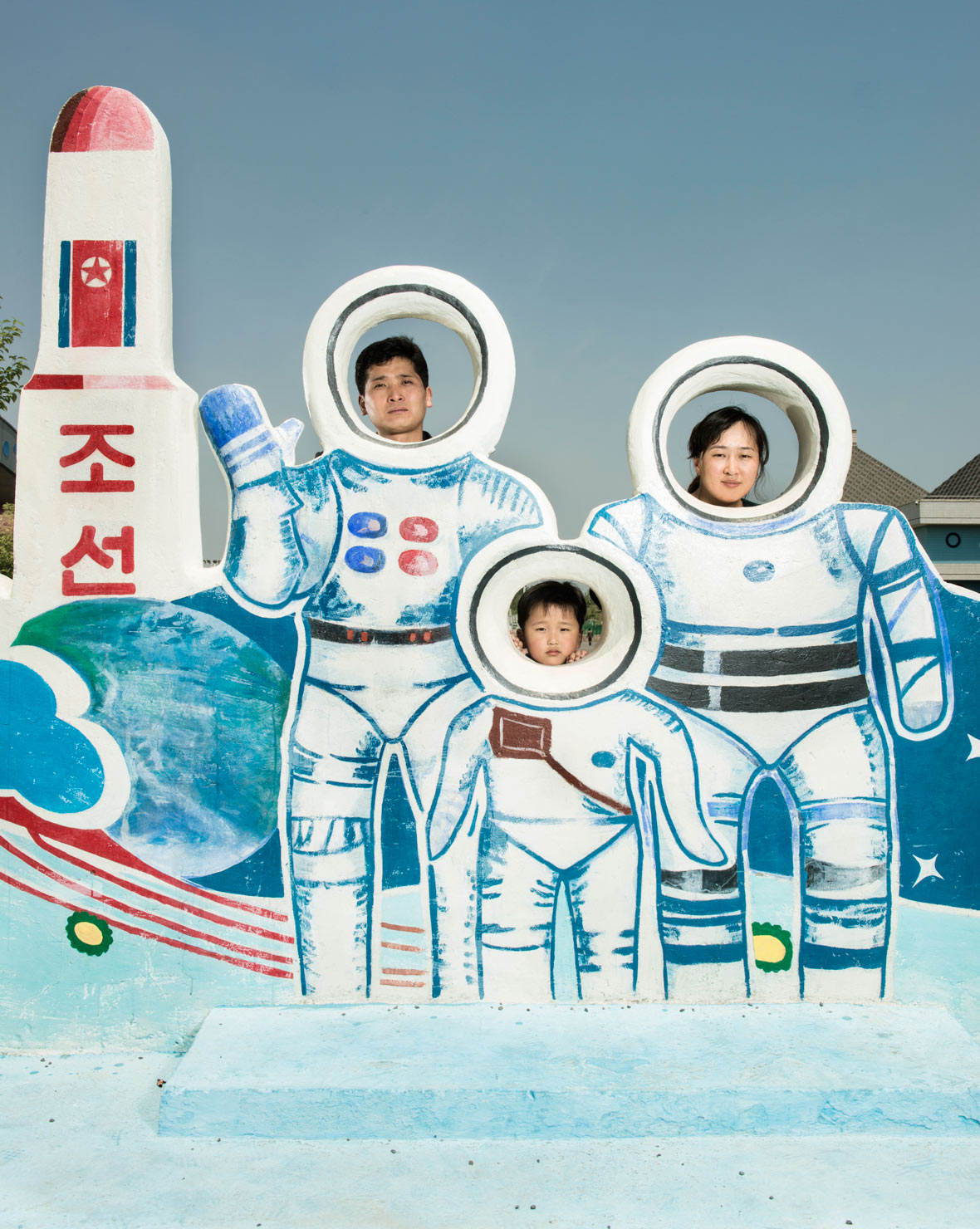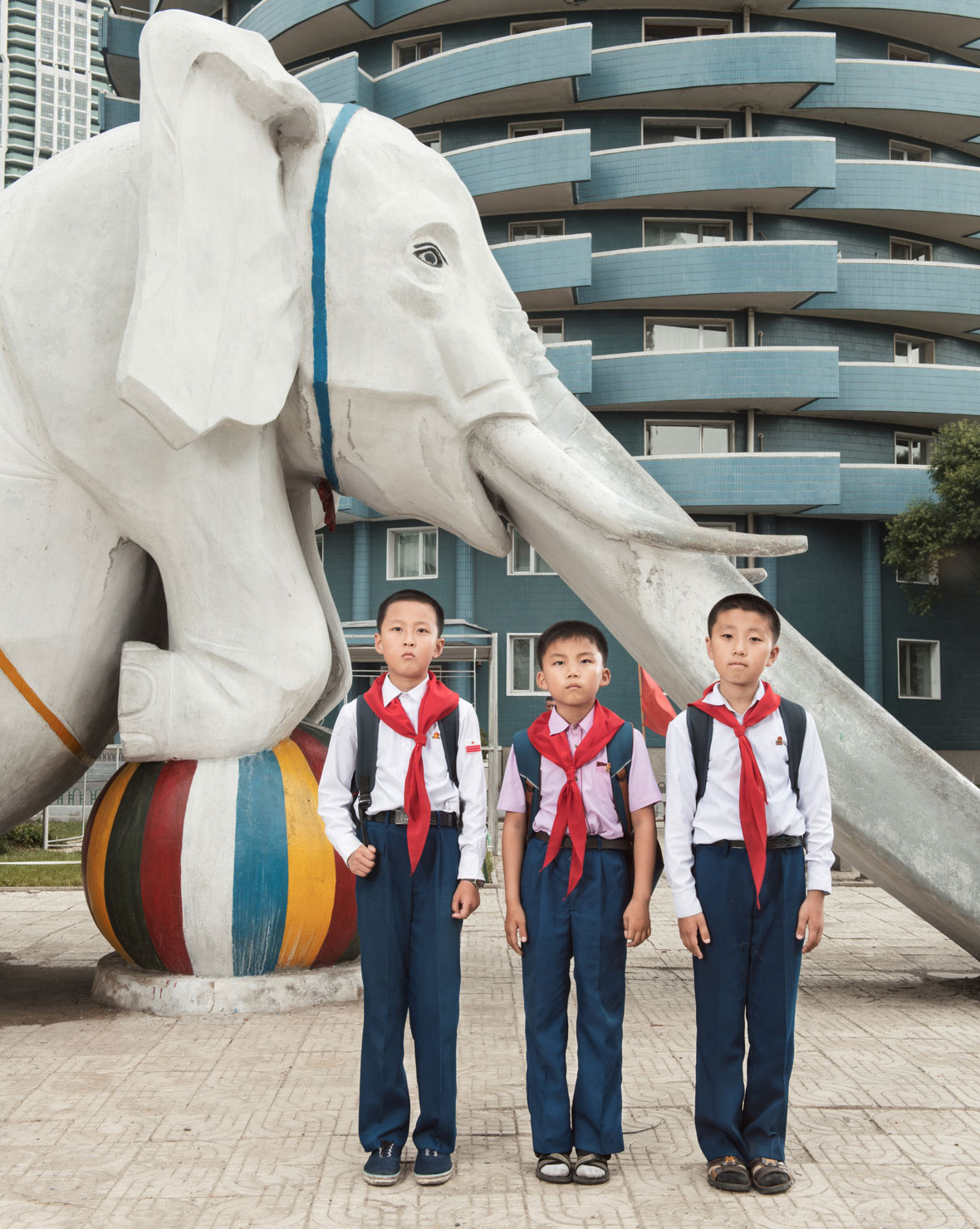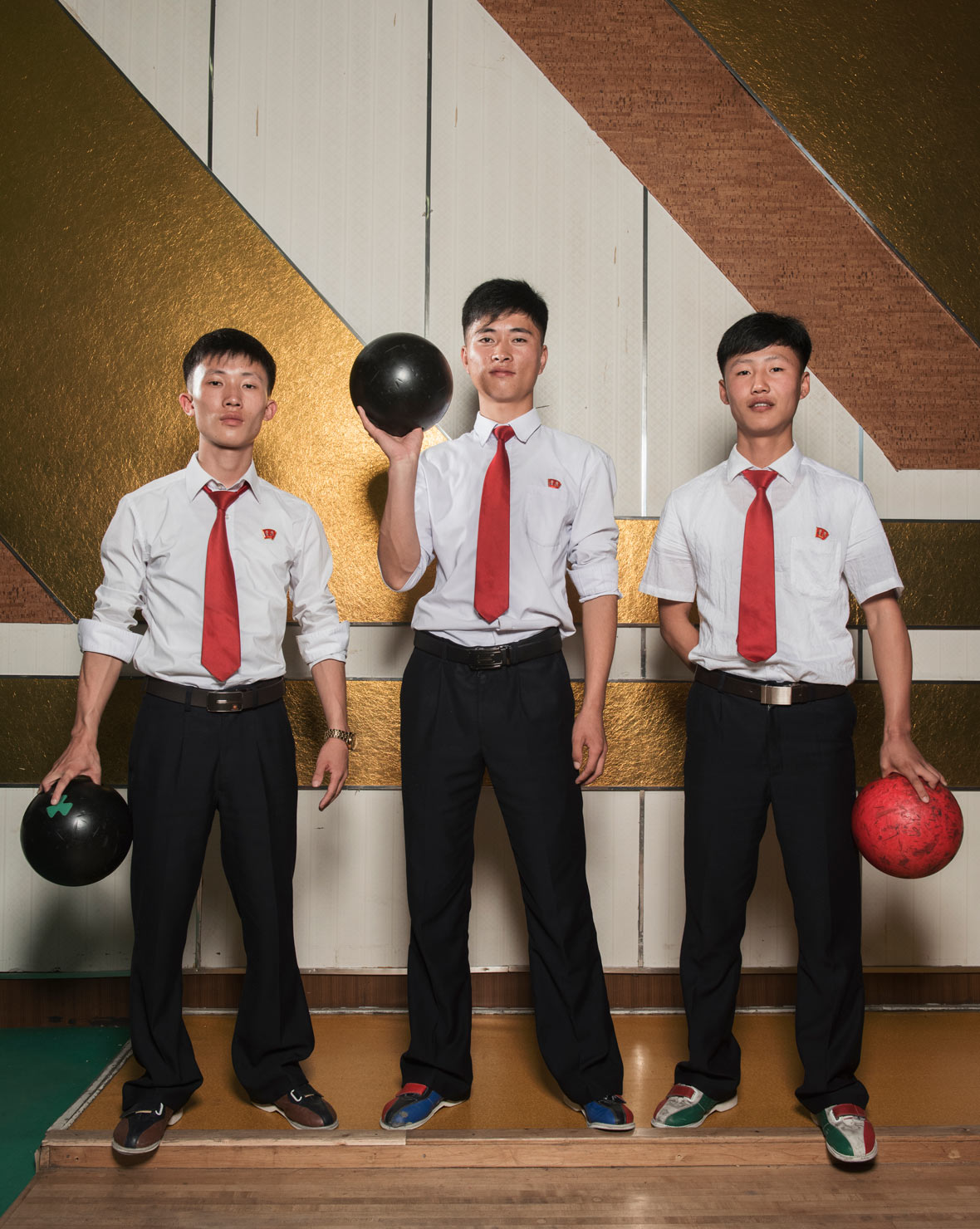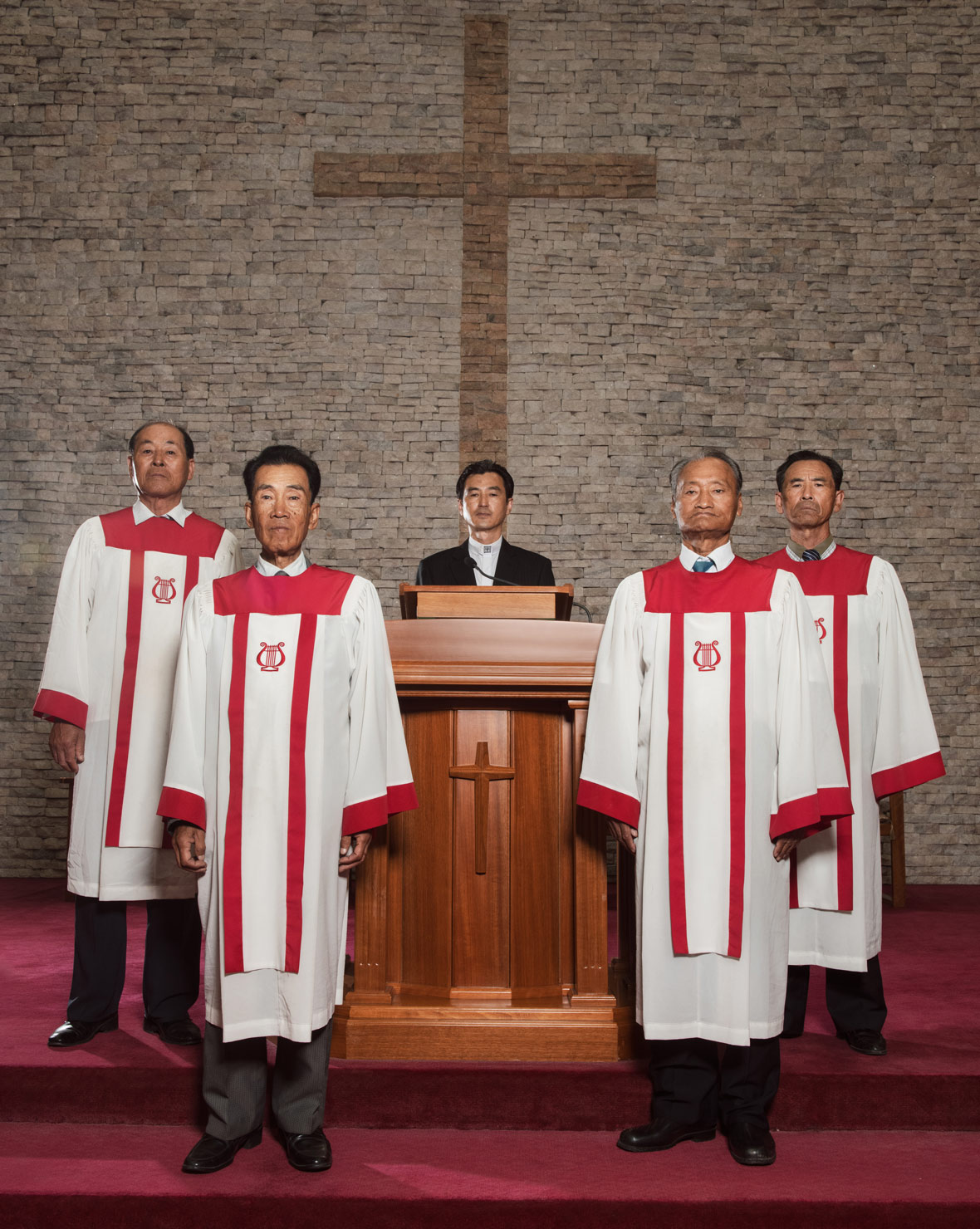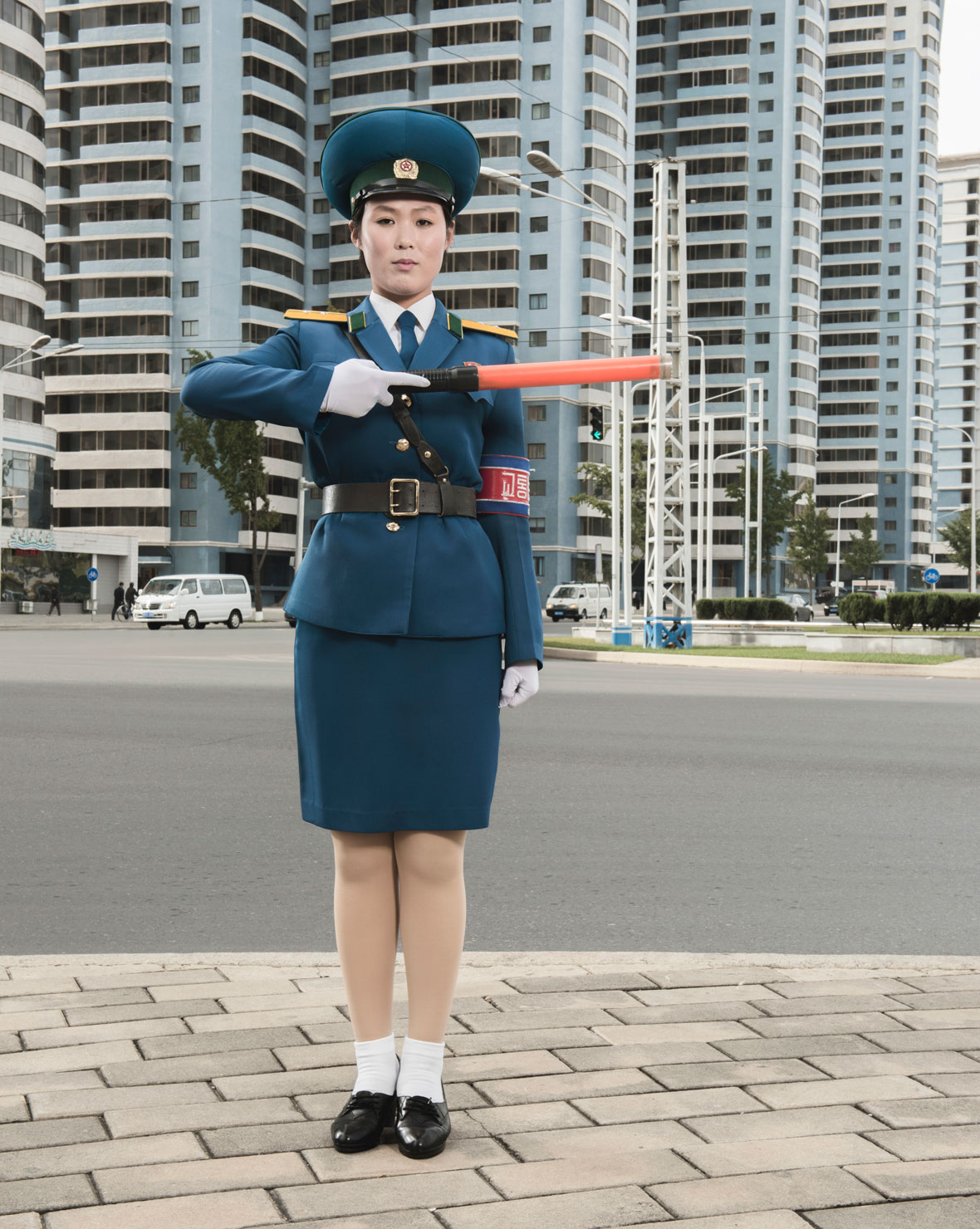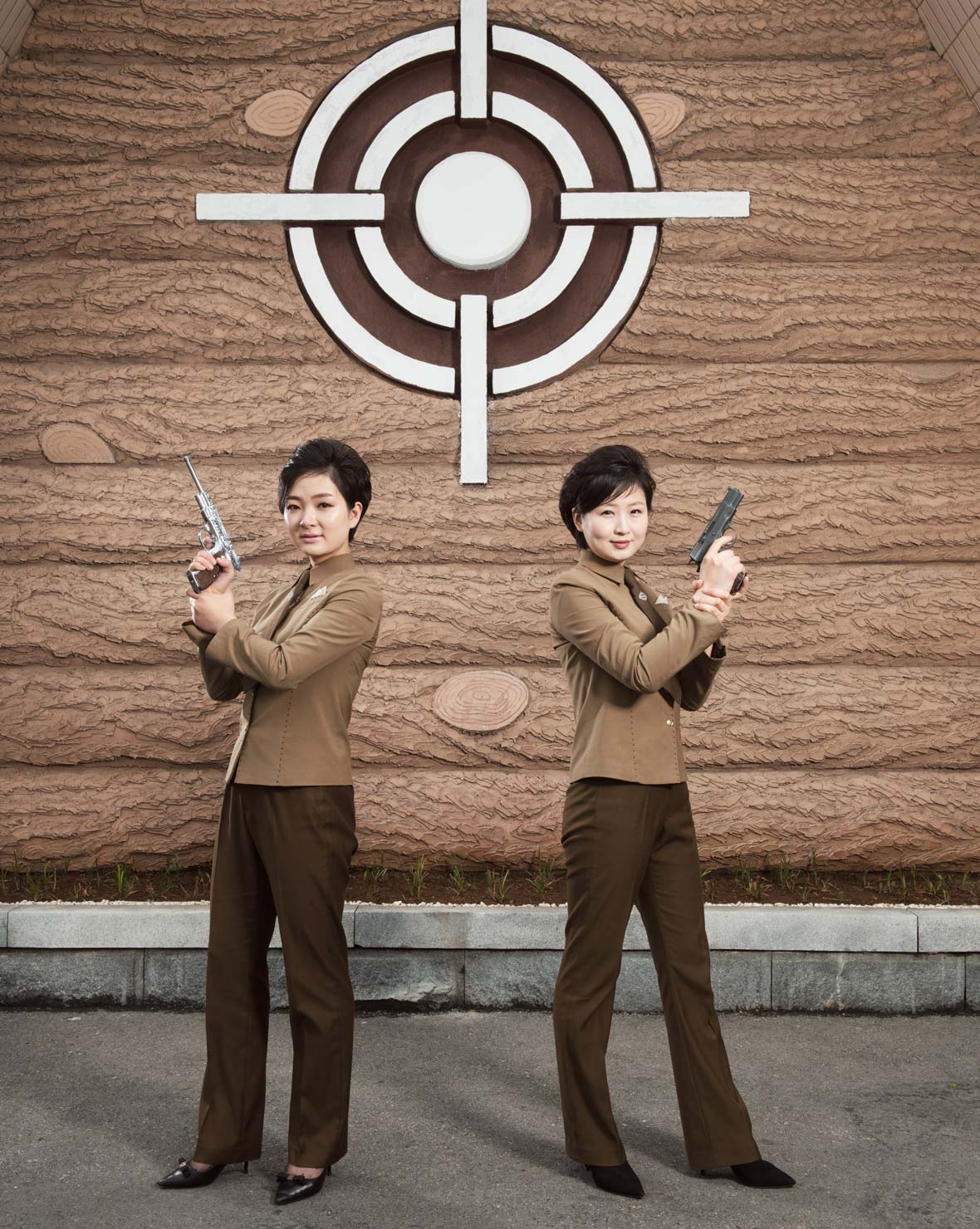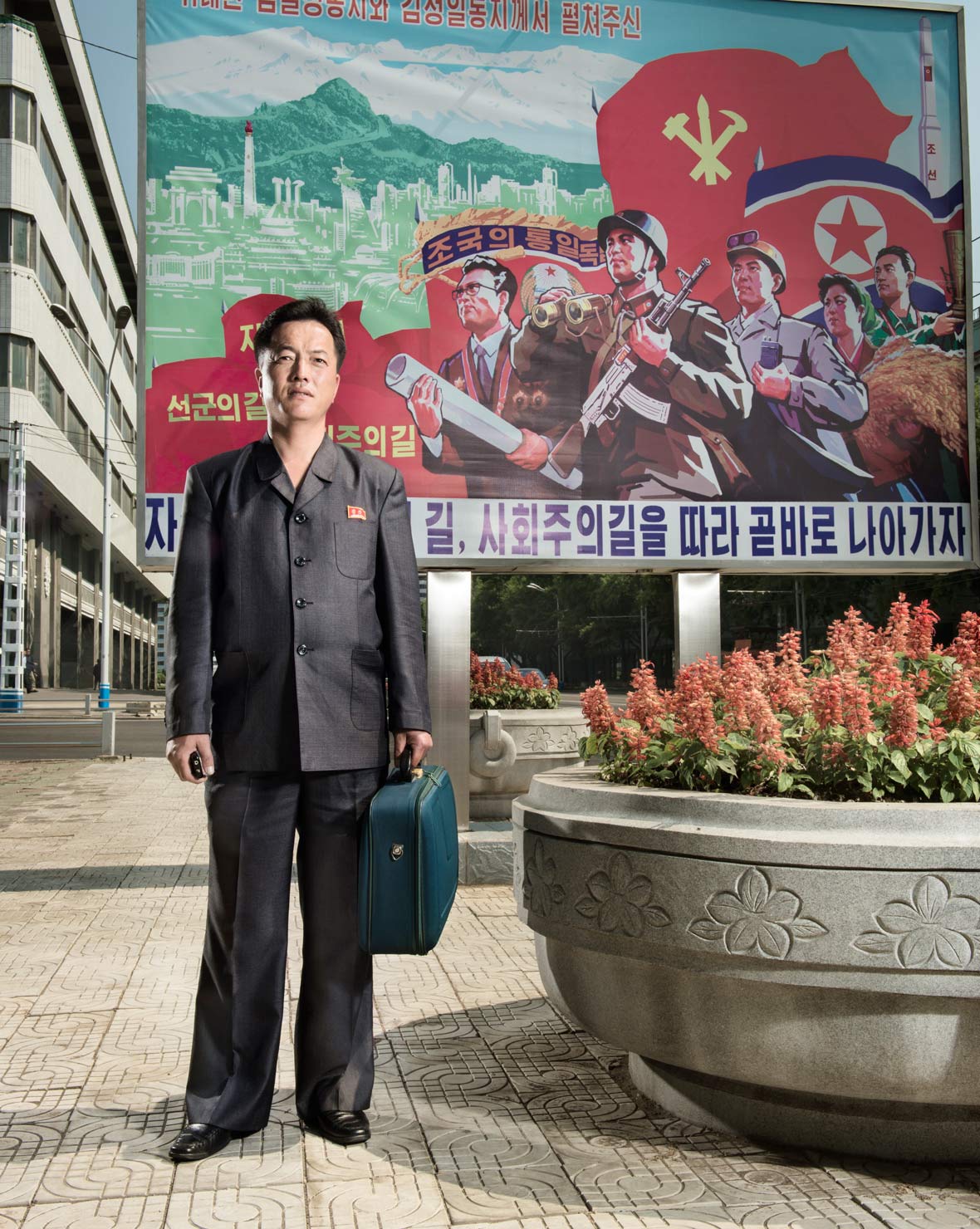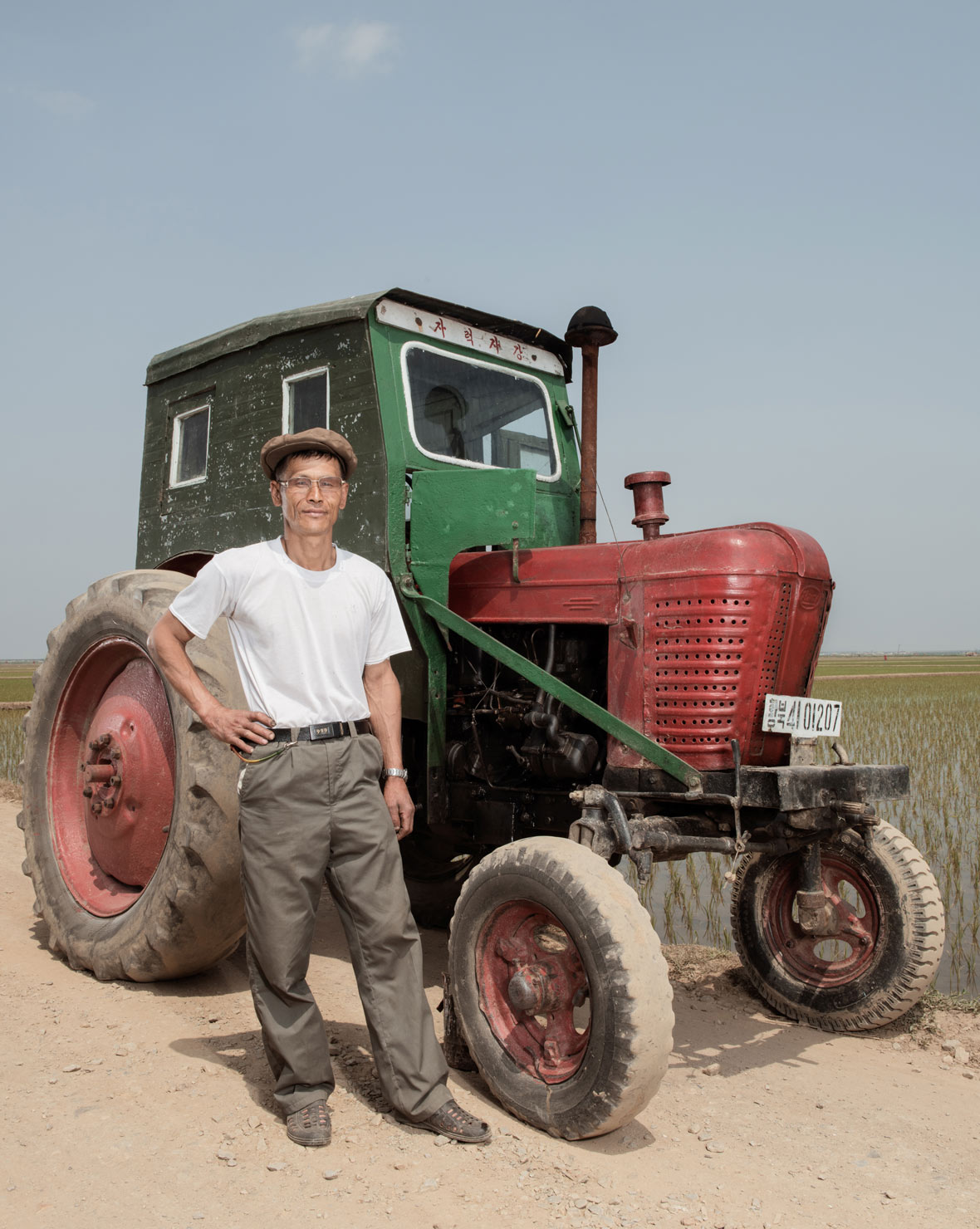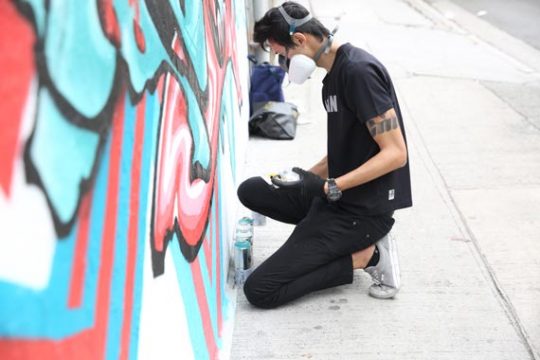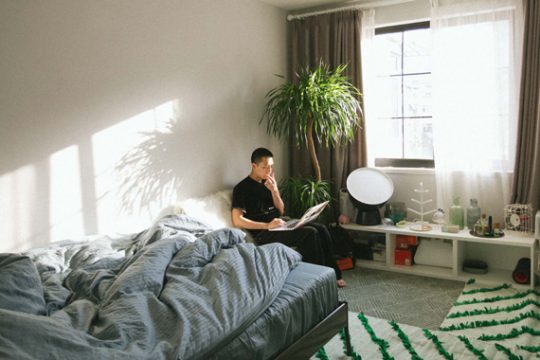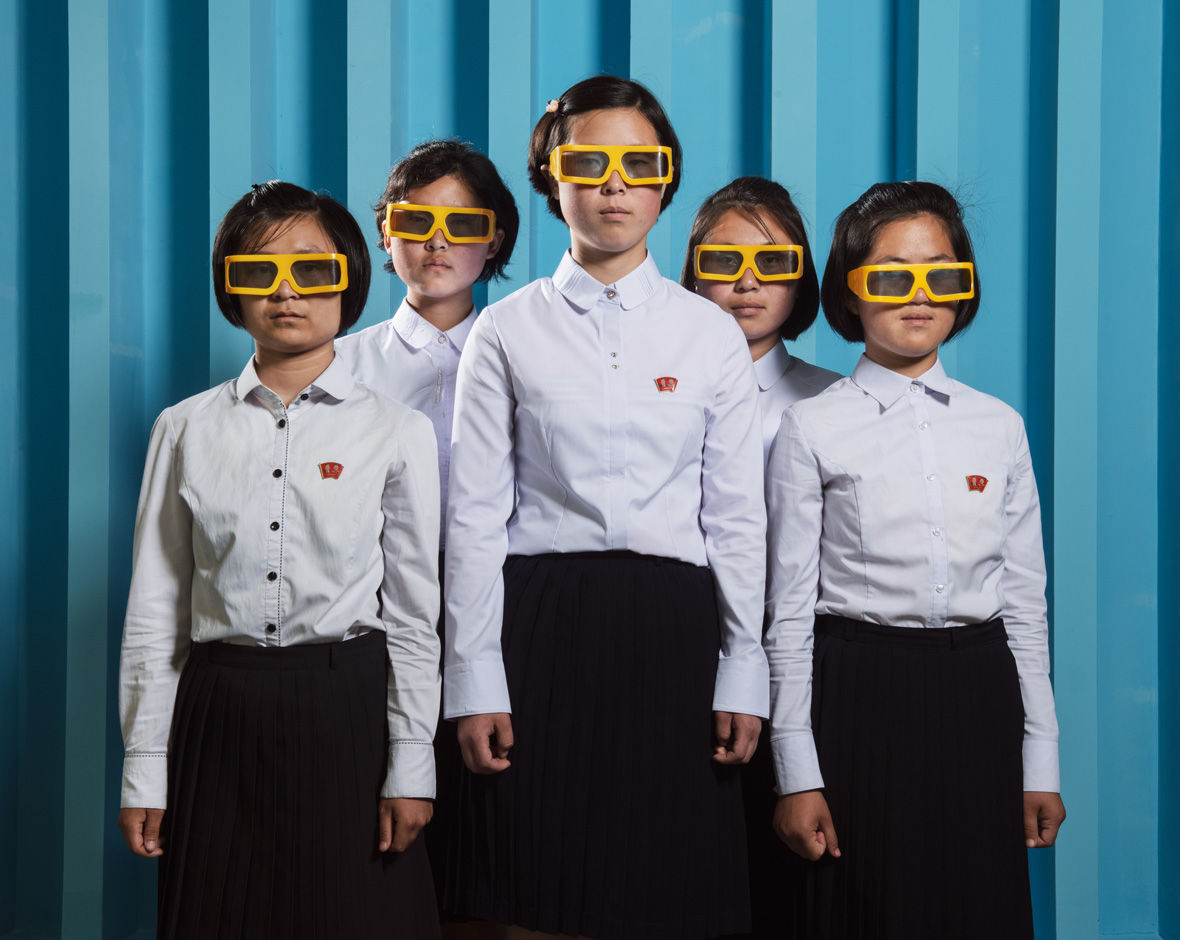
A car accident 40 years ago changed Stephan Gladieu’s life. That night, as he and his father drove along the border of Romania, their sedan flipped. Without a working vehicle, they were temporarily stuck in the Romanian countryside. This was 1981, when the region was caught in the crossfires of the Cold War. At the time, the area was a frozen landscape afflicted by extreme poverty and dictator rule. Even though he was still a kid, Gladieu’s eyes were opened to what life was like outside of his home country of France.
This experience sparked Gladieu’s curiosity about the human condition, and as he got older, it led him into the world of war journalism when he got older. Back then, Europe was a place marked by conflict and social strife, especially around the Iron Curtain, and he sought to document as much as he could. In 1989, at the age of 20, Stephan returned to Romania to document the revolution and the fall of the Ceausescu regime. His love of documentary photography has only grown since. With camera in tow, he’s flirted with danger in some of the world’s most unstable countries, covering wars in Bosnia, Herzegovina, and Afghanistan. He’s also traveled extensively to Iraq, Haiti, Armenia, and spent a considerable amount of time on the border between China and Kyrgyzstan. “In these chaotic, complex places, the relationship to life is different,” he says. “These places and the people we meet there are fabulous mirrors, revelators of what we have become. It is in the eyes of different people that we can discover what we are.”
In his latest explorations of the human condition, Gladieu points his lens towards North Korea, one of the most enigmatic and closed-off countries in the world.
四十年前的一起意外车祸,彻底改变了 Stephan Gladieu 的人生轨迹。那天夜里,父亲驾驶轿车带年幼的 Stephan 穿行于罗马尼亚边境,不料在途中发生翻车事故,汽车在路面翻滚数米,寸步难行。Stephan 和父亲不得不暂时停留在罗马尼亚境内,等待救援到来。事情发生在 1981 年,美苏冷战正处于剑拔弩张的态势,分割东西欧的铁幕界限还未被拆撤。而罗马尼亚正位于铁幕以东,还曾是一个封闭信息、限制人权、专制独裁的国度。Stephan 被当时眼前贫瘠和冰冷的场景深深震撼,因为罗马尼亚和他生活并成长的故乡法国相比,一切都看起来大相径庭。
自这段经历过后,Stephan 开始对国际上具有冲突、争端、争议的国家和地区燃起了兴趣,励志报道那些锈铁斑驳背后不为人知的真实故事。八年之后的 1989 年,罗马尼亚爆发革命,长达二十余年的齐奥塞斯库政权彻底倒台。此时二十岁的 Stephan 扛着相机再度返往当地,与上次不同的是,这回他已变身为一名年轻的战地记者。在随后的日子里,他的镜头总与危险随性,行走于世界最陡峭的山岸。九十年代至今,他亲历了萨拉热窝波黑战争、临危于阿富汗内战,更疾走在伊拉克、海地、亚美尼亚以及中国和吉尔吉斯斯坦边境等地。他说道:“那些被孤立、复杂、或是混乱国家和地区的人们,势必有着不平凡的命运。他们如同一面镜子,让我们探索人性的不同面向。而这些,都吸引着我不断前行。” 在 Stephan 最近发布的一系列作品中,他将镜头聚焦在半个多世纪以来,地球上最具神秘和争议色彩的国度——朝鲜。
North Korea, covering over 120,000 square kilometers of the Korean peninsula, carries many associations: politically controversial, military-oriented, backward, and repressive. But these are all macro-level happenings, and the stories of the everyday people are often left unheard. Without visiting for yourself, it’s often difficult to find out more about the people who call the country home.
Gladieu has long been enthralled by the mysterious country. “After half a century of existence, it is one of the most hated countries in the world; it is also one of the most misunderstood,” he says. “Obviously, the radicality of this paradox hides a reality that is more complex than we are given to read or see. War, famine, dissidents, the nuclear program, military parades and marches… Over the decades, the enigma took on a haunting dimension. What about the population? These twenty-five million North Koreans: who are they? How and what do they live on? In a context of permanent political, diplomatic and military crisis, why did the dynastic and dictatorial regime choose to overwhelm with propaganda, to the point of invisibilizing its people? What does it want to hide from us? How is it that this regime has never wavered when all the others have dislocated under the tremors of the fall of the Wall, modernity, social networks?”
Between 2016 and 2020, Gladieu visited North Korea three times. Traveling with an assistant, he photographed portraits in a variety of locales, including schools, theme parks, and rural countrysides. He’s even been allowed to locations that are typically off-limits, such as laboratories and military bases.
He immersed himself in the daily lives of the North Korean people, and his images aim to show real locals in places they frequented. Through these portraits, he looks to show the multifaceted nature of North Korean society. “I wanted to capture them out of the scope of propaganda,” he says. “I hoped to show this extraordinary nationalist pride, the inner stress and a certain bliss that one can feel as well, it’s quite strange. And I wanted to put them in their context, that is to say in their daily world of work, leisure, life in general.“
单从社会新闻上来看,朝鲜这块仅占地十二万平方公里的国家,总与政治、军事、落后、中央集权制等尖锐的字眼挂钩。而民生,却似乎很少被提及;倘若不是亲身前往,我们似乎很难一窥那里人们的真实生活。
Stephan 和我们大多数人有着一样的困惑,他说:“对我来说,朝鲜一直是个难以捉摸的国家。这片土地饱受外界的种种质疑与猜测,是最易被外界误解的国家之一。显然,这些猜测的背后,是一个更加复杂的现实世界。南北韩战争、饥荒、混乱的内政、核武器、军事演习、边境冲突…….几十年过去了,朝鲜的‘谜’依旧未能在世人面前解开。在去朝鲜之前,我一直在思考,朝鲜两千五百万人民究竟过着怎样的生活?当地政府长期与外界势力周旋,独裁者选择了压倒性的政治宣传,人民的生活是否真的被忽视?当所有其他封闭式政权都在柏林墙倒塌、现代化、社会网络的震动下分崩离析时,朝鲜为何从未动摇过? 我相信朝鲜人民独特的民族主义是解开这个谜题的钥匙之一。我更想了解那里每个鲜活的个人与国家命运的关系,于是我收拾行囊踏上了通往朝鲜的征途。”
2016 至 2020 年间,Stephan 曾与拍摄助理三次往返于法国和北韩两地。为了尽可能完整地记录朝鲜人民生活面貌,他们频繁走访于当地各个地方,从学校、游乐场,到乡下和农田,甚至前往科学研究所和军事训练营等禁区,以真实的人物和场景,拼凑着朝鲜社会的方方面面,他接着说道:“我想要捕捉朝鲜人在媒体宣传之外的真实面孔,希望把他们外在的民族自豪感、以及潜藏于内心的世界观一一展现出来。因此在拍摄的过程中,我尽量让镜头覆盖绝大多数场景和人物,捕捉他们平时的工作状态、休闲娱乐还有生活种种状态。”
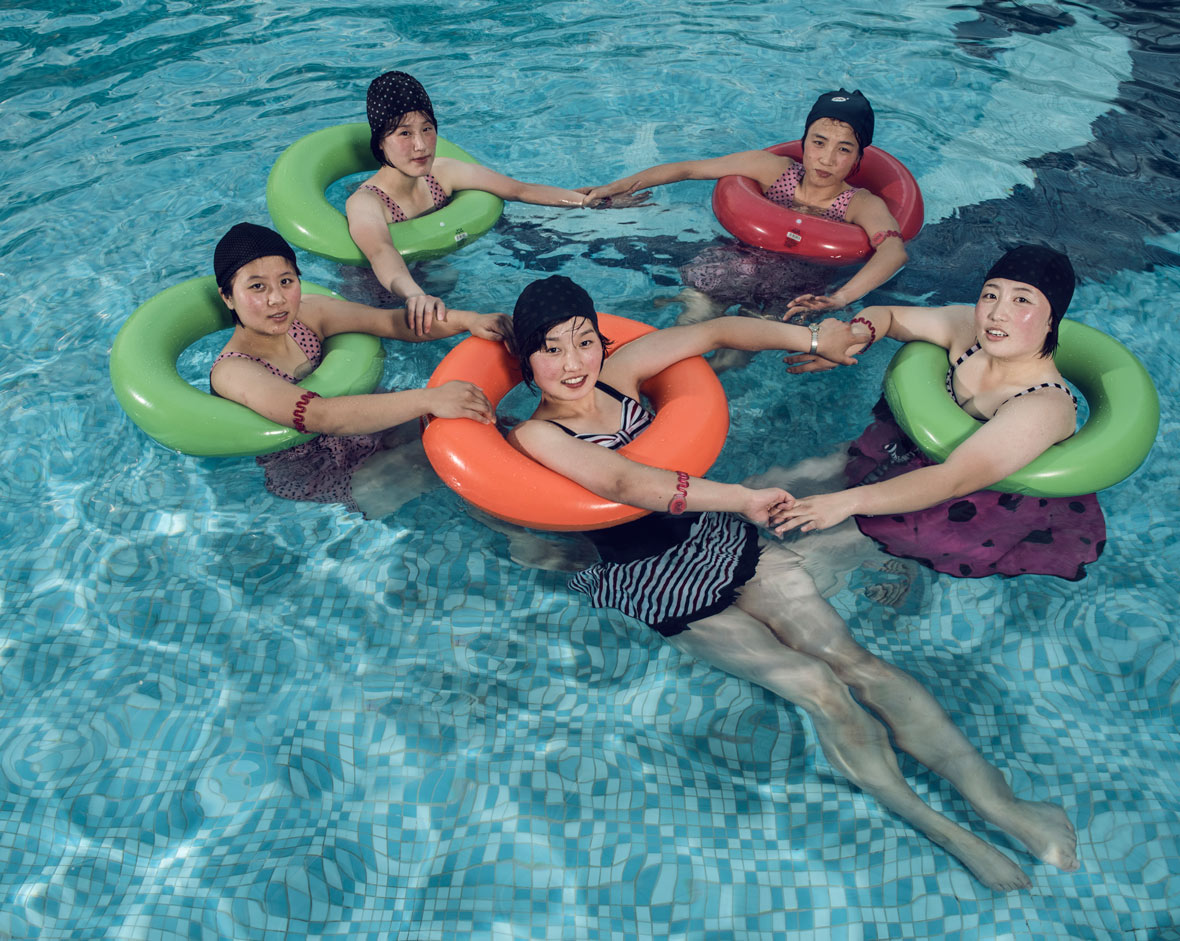
Humans are at the center of all of Gladieu’s work. Gladieu’s experiences as a war journalist have given him a newfound understanding of humanity. People, as he sees it, are the ideal medium to understand reality. Through a person’s demeanor, wardrobe, and environment, you can piece together a clear picture of their life.
People are a means to understand particular eras or societies to Gladieu, and it’s something that’s particularly exemplified in his observations of North Korea. Whether it be joy, suspicion, tension, or nervousness, the expressive people of different backgrounds that appear in his photographs speak volumes to their perceived realities.
At first glance, Gladieu’s work may appear documentary in nature, but through his deliberate manipulation of color, composition, and lights, he heightens the work into artistic territories. “In my personal works, I work at the border between documentary photography and aesthetic photography,” he says. “It’s not only reportage but an art project.”
The direct light he places on his models and the rigid framing of his composition are inspired by the works of August Sander, whose documentary work is similarly informed by an artistic approach. The way that Gladieu’s subjects are illuminated feels particularly revealing, almost as if a light was being shone on their out-of-sight emotions.
人物,是 Stephan 创作中的关键。在从事多年战地记者的经验中,他渐渐发觉,人物是探索现实的绝佳路径。观众可以通过人物的外貌、神色甚至穿着打扮,结合背景中出现的事物,来揣测他们的生活环境。在他看来,人物与特定时代或社会状态也有着不可抹去的联系,而这一点在朝鲜人民身上体现地尤为突出。因而在 Stephan 的作品中,不同年龄阶段、不同职业领域的面孔纷纷出现。他们或喜悦、或严肃、或神情紧张、亦或神情紧张……无需掩饰,带观众直观地洞悉朝鲜社会现实。
表面看起来,Stephan 的作品的确与纪实摄影有着相似之处,其涵盖了社会的方方面面,取景与人物类型均来自现实,并非虚构。不同的是,他能通过出色的构图和灯光运用,让照片兼备艺术气质。他说道:“在我个人的作品中,我尝试突破纪实摄影或新闻报道摄影的边界,让照片看起来更有说服力,同时也具有空间可塑性和故事性。” 作品中,强烈的灯光从正面打在被拍摄者身上,并让人物站位和眼神的方向同时处于画框的正中心,Stephan 自称这样的拍摄手法为镜像人物摄影(Mirror Portrait Photograph)。他承认这样的创作方式是受上世纪初著名摄影师 August Sander 的影响,往往令照片带来强烈的真实感;与此同时,人物从头到脚被闪光灯附着,让被拍摄者情绪被毫无保留地放大。
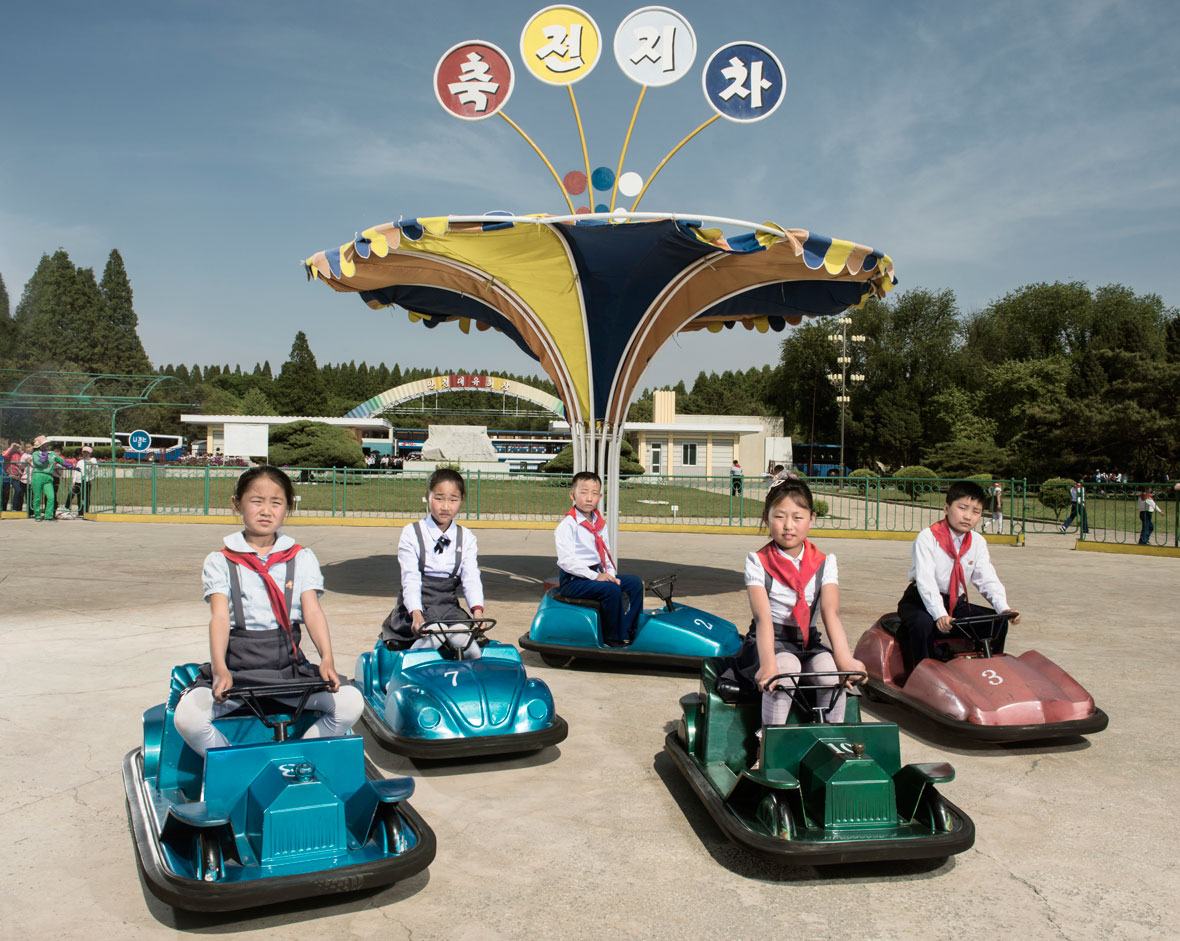
Photography, especially fine-art photography, remains perplexing for the average North Korean. Most locals are typically only familiar with the medium as propaganda art. “In North Korea, iconography as we know it is almost nonexistent. Their iconography is propaganda, and consists mainly of portraits of the founders. Therefore, North Koreans have a tense relationship with the image of their identity. It is a phenomenon that they do not control, whose subjective part is totally new to their culture.”
To shoot the series, Gladieu had to be more persuasive than usual. He spent a lot of time talking to locals so that they’re able to put down their guard when the photo was taken. He also had to sweet-talk the local guide who was responsible for him while he was in the country.
Despite the challenges, there were plenty of interesting moments during his visits. For example, he was excited when he was given permission to visit a gun range. Only after arriving did he learn that he wasn’t allowed to shoot any of the military personnel. Disappointed, he was about to leave when the guide suggested that he shoot two of the female staff working there. Gladieu ended up pleasantly surprised by the photo. In the final shot, the two women, dressed in heels and collared tan shirts, assumes a James Bond-esque stance with vintage pistols in hand.
Another particularly memorable portrait was one he made when his original plans of photographing a female factory worker were sidetracked. Instead of being allowed to see her on the production line, he was only allowed to shoot her at an indoor swimming pool, which they claimed were staff facilities. “Each time the North Koreans intervened to prevent me from taking an image, of great banality in my eyes, I found myself taking a portrait that was unimaginable for me,” Gladieu says. “Their absolute quest for perfection perfectly served my work, the result of which is the fruit of our crossed visions. Nothing was staged, but almost everything was controlled.”
即便在当下,艺术摄影对于朝鲜人来说依然陌生,当地人一辈子可能仅会在婚纱照中触摸到这门艺术。Stephan 说:“朝鲜并不存在我们所理解的图像学。他们的图像学基本围绕政治宣传的功能,被大部分创始人肖像充斥。 因此,普通朝鲜人对自己的身份画像会感到紧张。这种现象超出了他们掌控能力,主观的创作方式对他们的文化而言更是前所未有的。而这将成为我的创作机会,也是我作品中冲突的主要来源。”
为了成功拍摄一张照片,Stephan 在当地没少花费口舌,他多次努力让被拍摄者放下戒备、也尝试与管理人员协商。要知道,在未被许可的情况下拍摄执法人员,或是官兵,都属于违法行为。而他的拍摄初衷不带有半点虚构,这反倒为拍摄增添了几分难度。
除了困难,拍摄途中也不乏有趣的故事发生。在一次射击训练营拍摄的过程中,Stephan 原计划对训练中的士兵进行拍摄,可惜拍摄当日遭到遏令禁止。无奈正要离开,他的摄影助理向他指了指站在射击场一旁的两位后勤女兵。当天,Stephan 拍下了她们。两位女兵握住复古手枪,在木质标靶前留下了类似 “詹姆士·邦德” 的肖像照;还有一次,Stephan 原本希望进入工厂流水线拍摄女工,但没想到工厂顶楼是一座室内泳池,工厂内女工们戏水游泳的照片就这样拍摄完成。他说道:“每当在朝鲜拍摄遇到一些阻碍时,我总能拍摄一些非同凡响的照片。在森严的社会形态下,一切都尽然有序、高度统一,那些偶然出现的生活趣味,反倒会让人无比兴奋。”

Even though the project is finished, Gladieu still often contemplates on his experiences in North Korea. The country is simply so unlike any other he’s been to. “When you enter North Korea, you enter a theater, a show within a show,” he says. “Observing the people, I saw joy sometimes, inner stress very often, nationalism and pride always. In almost all of their eyes, I feel a buried inner stress, the buried stress of a nation. “
离开朝鲜之后,Stephan 依然会时不时回想起在那里度过的时光。他说道:“朝鲜像一个没有戏剧节目的剧院;或是没有游乐设施的游乐场,这里没有你想找的乐子。独裁者的控制下,强烈的民族主义和民族自豪感在这里随处可见;人民生活在这种恐惧之下,却能安居乐业,全然不知身外的世界。这更让外来人心中总有股说不出的压抑,这种压抑是来源于对政权的恐惧。”
Like our stories? Follow us on Facebook and Instagram.
Website: www.stephangladieu.fr
Instagram: @stephangladieu
Contributor: Pete Zhang

